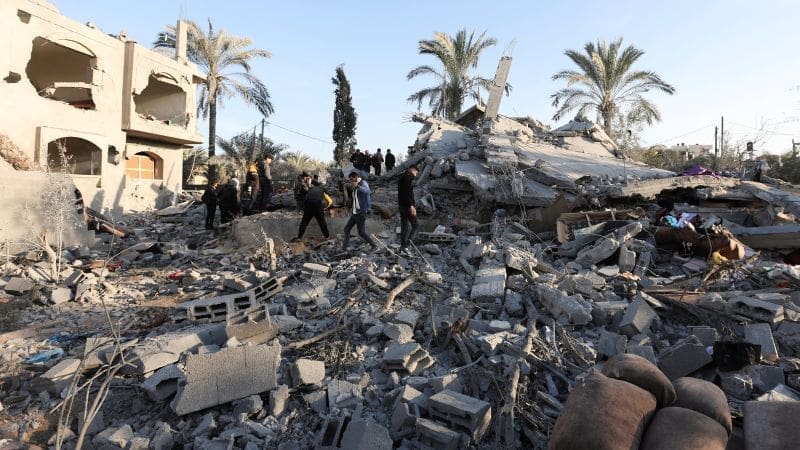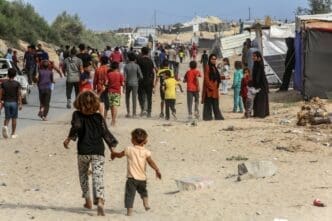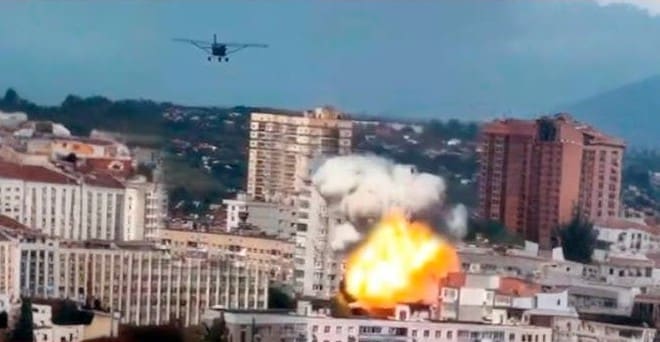A tragic incident unfolded in northern Gaza as an Israeli airstrike claimed the lives of eleven individuals, marking a grim escalation in the ongoing conflict. Among those killed are several family members, underscoring the devastating impact on civilians. This event highlights the persistent violence in the region even as humanitarian aid makes its way to areas that have been isolated for more than two months.
Hospital authorities in the central Gaza area confirmed the fatalities resulting from the airstrike on Saturday night. Khalil Al-Daqran, spokesperson for the Al-Aqsa Martyrs Hospital, reported that others sustained injuries from the attack on a house situated east of Deir al-Balah, further complicating the humanitarian crisis.
The Israeli military justified the operation by targeting what they described as an ‘Islamic Jihad terrorist’ who was utilizing a building within a humanitarian zone. However, discrepancies have emerged as the military’s account differs from local reports regarding the casualty figures.
In another operation, Israeli forces targeted Hamas operatives allegedly operating within a command center that was once a school in the northern city of Gaza. Gaza’s Civil Defense stated that rescue teams have recovered several bodies and injured individuals from the site, which also serves as a shelter for displaced persons.
The military activities extended to ground operations in Beit Lahia, located on Gaza’s northern perimeter, where the Israeli Defense Forces (IDF) reported the elimination of numerous terrorists and dismantling of underground infrastructure. These actions have sparked concerns over the impact on civilian safety and infrastructure.
Meanwhile, escalating military engagements around Kamal Adwan hospital have drawn international concern. Despite denials from the IDF about direct strikes on the hospital, Dr. Hussam Abu Safiya, the facility’s director, described the vicinity being targeted heavily by artillery and drone strikes, raising alarms from global health bodies.
The World Health Organization (WHO) provided emergency assistance by delivering fuel, blood supplies, and relocating patients amidst ongoing hostilities. Their operations were conducted despite sporadic explosions around the hospital, reflecting the challenges faced by humanitarian workers in the conflict zone.
Amid these dire circumstances, a glimmer of hope emerged as a UN convoy successfully delivered essential supplies to Beit Hanoun in northern Gaza, a region cut off from aid for over 75 days. Yet, the economic strain remains evident with soaring food prices causing substantial distress among residents.
In Khan Younis, a crowded distribution center spotlighted the ongoing struggle for basic necessities. Yasra Salem Abu Al-Rous, one of the local residents, articulated the desperate situation as she sought food for her family, unable to afford basic staples without external assistance. Meanwhile, Aya Al-Batoon shared a heart-wrenching account of her daughter’s deteriorating health due to malnutrition, a stark indicator of the worsening humanitarian landscape.
There are still discussions about a potential ceasefire between Israeli forces and Hamas, which may include the release of hostages. Nevertheless, the path to peace remains fraught with challenges as hostilities continue across the region.
The recent airstrike and ongoing hostilities serve as a somber reminder of the human cost of this conflict. The situation in Gaza is marked by rising civilian casualties, dire humanitarian needs, and a fragile hope for peace. As international organizations strive to deliver aid and support amid the turmoil, the global community watches with concern, hoping for a resolution that prioritizes human lives.
Source: CNN













